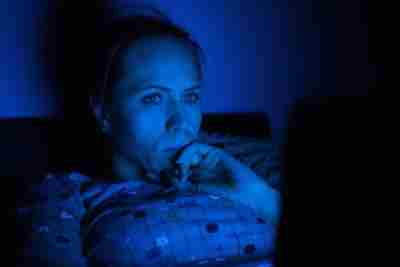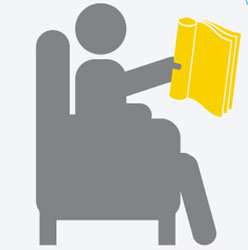Can Social Media Use Cause Sleep Disorders?
Researchers from Boston Children’s Hospital and Merck have built the beginnings of “digital phenotype” of insomnia and other sleep disorders based on data from Twitter.
This study, published Thursday in the Journal of Medical Internet Research, is one of the first to look at relationships between social media use and sleep issues, and—based on assessments the sentiments expressed in users’ tweets—gives preliminary hints that patients with sleep disorders may be a greater risk of psychosocial issues.
[ Survey Reveals Americans Are Unable to Sleep ]
The study—led by Jared Hawkins, PhD; David McIver, PhD; and John Brownstein, PhD, of Boston Children’s Informatics Program and researchers at Merck—is the product of a Boston Children’s / Merck collaboration on social media and sleep announced in 2014.
Insomnia and other sleep issues affect between 50 and 70 million Americans. Apart from their impact on productivity, accidents and risky behaviors, chronic sleep disorders also contribute to diabetes, cardiovascular disease and depression.
[ New Pregnancy Sleep System for Expectant Mothers ]
Historically, population-level research on sleep disorders has relied on survey methods such as the Behavior Risk Factor Surveillance System. However, such methods are time- and resource-intensive, expensive, suffer from long lag times before reporting and are not generalizable to the larger U.S. population.
Research based on social media data may help overcome these limitations. To support such research, Hawkins, McIver, Brownstein and their colleagues sought to develop a “digital phenotype,” or baseline profile of what a person suffering insomnia or other sleep disorders “looks” like on social media.
[ President Obama to Engage with People Using Twitter ]
“Sleep deprivation and chronic sleep disorders are not well understood,” said Brownstein, who directs the hospital’s Computational Epidemiology Group. “We wanted to see if we could use new forms of online data, such as Twitter, to characterize the sleep disordered individual and possibly uncover new, previously-undescribed populations of patients suffering sleep problems.”
The research team used publically available anonymized data from Twitter to create a virtual cohort of 896 active Twitter users whose tweets contained sleep-related words (e.g., “can’t sleep,” “insomnia”), or hashtags (e.g., #cantsleep, #teamnosleep), or the names of common sleep aids or medications. They then compared data from that cohort to those of a second group of 934 users who did not tweet using sleep-related terms.
Taken together, the data suggest that Twitter users suffering from a sleep disorder are less active on Twitter on average but tweet more during traditional sleeping hours. The increase in negative sentiment in their tweets suggests that sleep-disordered users could be at an increased risk for psychosocial issues.
“These findings are preliminary and observational only, and need to be studied further,” Brownstein cautioned. “But they suggest that social media can be a useful addition to our toolkit for studying the patient experience and behavioral epidemiology of sleep disorders.”
Photo courtesy: Boston Children’s Hospital













